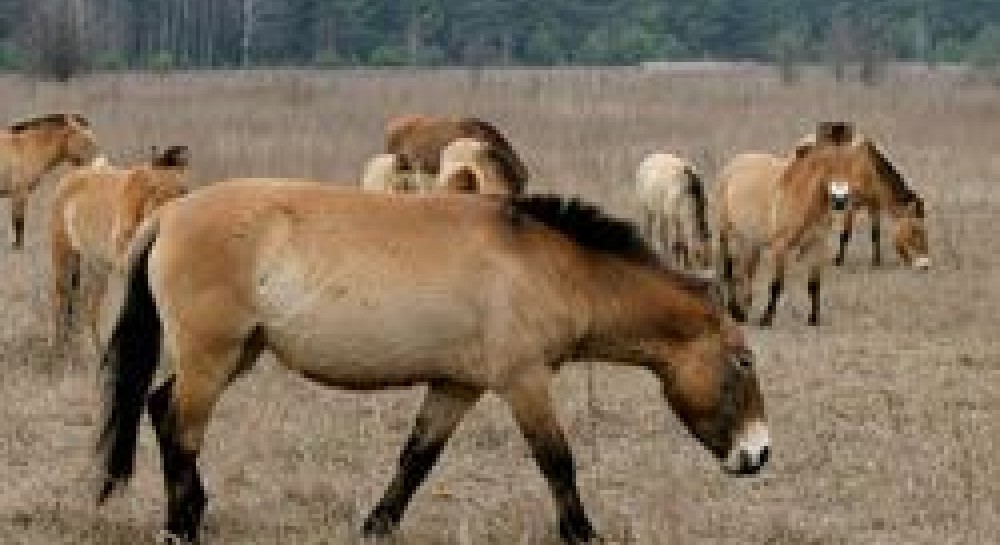
Doubts over Chernobyl wildlife recovery
Humans are still forbidden to live within 30 kilometres of the site of the 1986 accident, described as the worst environmental disaster of all time. No proper effort has been made to monitor Chernobyl`s ecosystems...
An argument has erupted over the environmental health of the area surrounding the Chernobyl nuclear reactor that exploded catastrophically more than two decades ago.
Humans are still forbidden to live within 30 kilometres of the site of the 1986 accident, described as the worst environmental disaster of all time. But this evacuation zone is still home to many bird and animal species. Some research has determined that this wildlife is still suffering the effects of the disaster; other ecologists have declared that the area`s ecosystem is thriving and that the radiation has had no lasting effect on wildlife.
A debate is now simmering in the pages of the journal Biology Letters over the specific issue of birds in the area. Researchers who believe that detailed census data show that bird populations have been affected by the radioactivity of the landscape are butting heads with another who thinks that this conclusion is flawed.
Swallows and barns
In July this year, Anders Møller of the Université Pierre et Marie Curie in Paris and Timothy Mousseau of the University of South Carolina in Columbia reported1 that, in regions where radiation remains highest, bird abundance and population density is reduced. But Jim Smith of the University of Portsmouth, UK, now criticizes2 that research. He argues that the effects could be due to declines in species such as barn swallows (Hirundo rustica ) that rely on the presence of humans to thrive.
More than 330,000 people were evacuated from the exclusion zone, which covers the Chernobyl region of Ukraine, and a large swathe of neighbouring Belarus, where prevailing winds blew much of the radioactive matter. Abandonment of farms by the evacuees could be the real reason why birds such as barn swallows now seem to be suffering, Smith argues.
"I don`t think they`ve proved there`s been damage to barn swallows [as a result of radioactivity]," says Smith. "It annoys me when I see people casting doubt on [ecosystem recovery] on the basis of a study of barn swallows."
Møller, Mousseau and their colleagues respond in the same issue of the journal3, arguing that barn swallows commonly breed in wild sites as well as farms.
Keeping tabs
The argument highlights the fact that, Møller`s team argues, no proper effort has been made to monitor Chernobyl`s ecosystems. It claims that international organizations such as the World Health Organization and the International Atomic Energy Agency have relied on "anecdotal evidence".
"Why has there been no concerted effort to monitor the long-term effects of Chernobyl on free-living organisms and humans?" Møller and his colleagues write. Although there are no plans to repopulate the exclusion zone, an estimated 5 million people still live on land contaminated by the accident.
Smith argues that the biggest impacts of the accident on humans have clearly been "social and psychological", as a result of the trauma of evacuation. He admits that published research on ecological impacts, in Western journals at least, is scant. But he points to evidence that rare and threatened species are colonizing the zone. And he notes that the Belarusian government has declared a large chunk of the zone as a “state radioecological reserve”.
Smith adds that the Russian-language literature contains many more detailed accounts of the health of Chernobyl`s wildlife. Many of these accounts, he says, suggest that wildlife is indeed bouncing back.
"We need to be coming to a consensus about whether this is true or not," he says. "Ecosystems are complicated, and it`s very difficult to test hypotheses. It`s not an easy thing to do adequately."
The debate comes just days after the United Nations declared an end to the `emergency phase` of the disaster. In a resolution adopted last week at its New York headquarters, it declared that efforts should now focus on recovery and sustainable development of those displaced by the evacuation, rather than treating them as victims in need of emergency aid. The report did not address wildlife remaining within the zone.
References
Møller, A. P. & Mousseau, T. A. Biol. Lett. doi:10.1098/rsbl.2007.0226 (2007).
Smith, J. T. Biol. Lett. doi:10.1098/rsbl.2007.0430 (2007).
Møller, A. P., Mousseau, T. A., de Lope, F. & Saino, N. Biol. Lett. doi:10.1098/rsbl.2007.0528 (2007).

